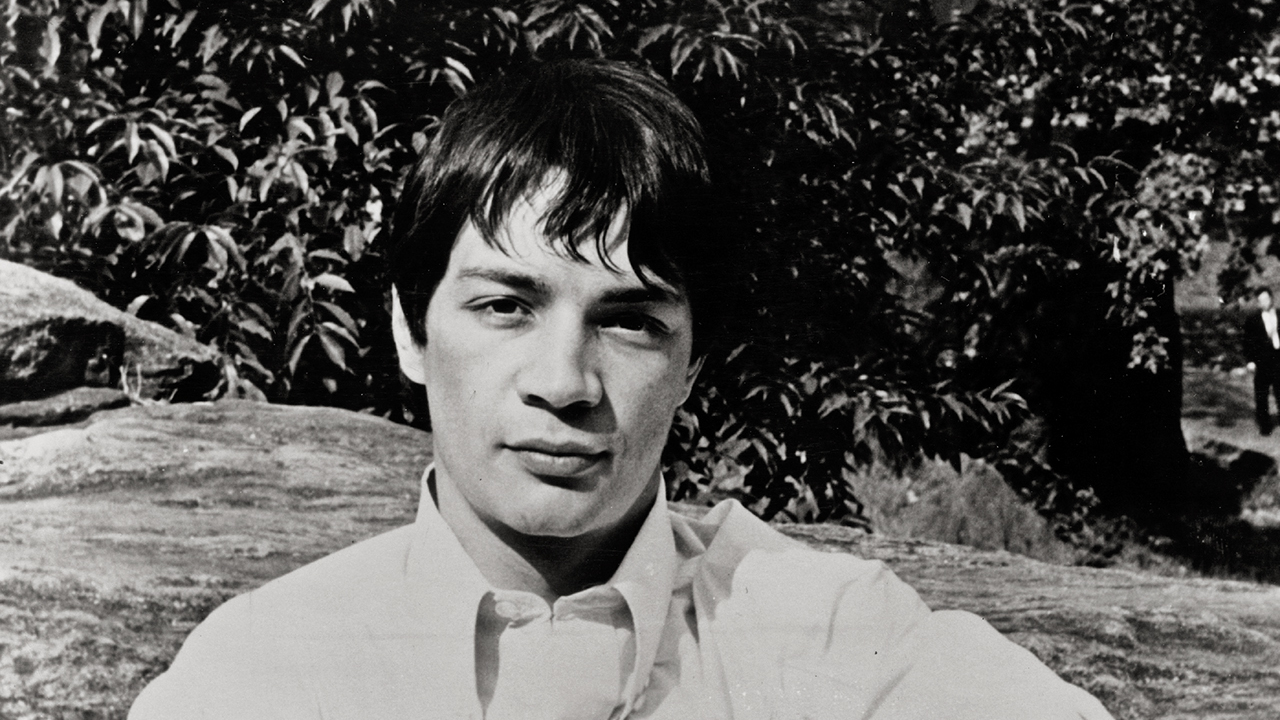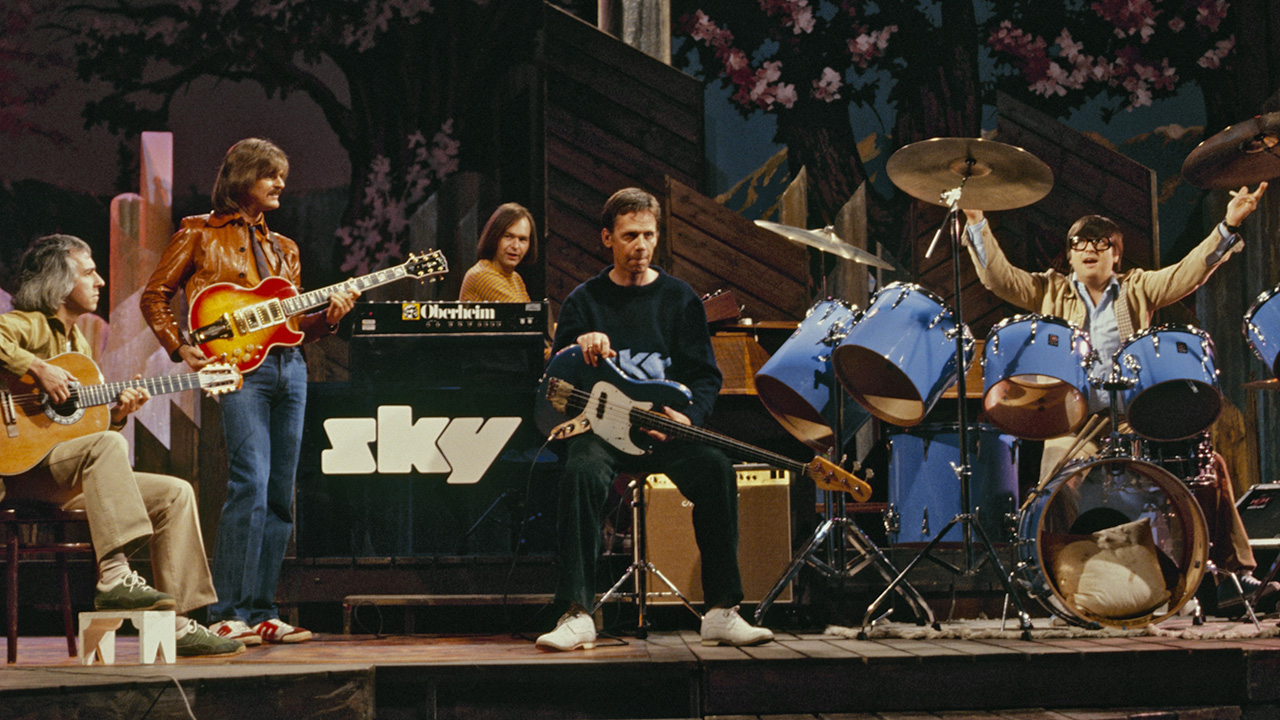66 from '66 – R-S
The 66 records that built rock as we know it – all from 1966.

Our 66 from ‘66, from R-S.
The Rising Sons
Candy Man
Columbia single, February 1966
The only officially released ’66 example of this pre-supergroup (Taj Mahal, Ry Cooder, Gary Marker, Jesse Lee Kincaid and Kevin Kelley) was a jolly paean to the delights of purchasing drugs, or ‘candy’, in New Orleans. For a split second the Rising Sons’ accomplished blues and country folk rock might have been as popular as The Byrds or Moby Grape. Instead they became more important after they disbanded. Their blend of Taj’s blues, Marker’s progressive jazz and Cooder’s ability to play the entire guitar family paved the way for a new spirit of eclecticism: Americana before it officially existed. Plus, their split meant we got Taj Mahal and Cooder’s solo careers and Kelley’s part in The Byrds’ country revival, and their original drummer Ed Cassidy went on to form Spirit – so that’s four bands for the price of one.
Mitch Ryder And The Detroit Wheels
Devil With A Blue Dress On
New Voice single, September 1966
Before the J Geils Band there was Detroit’s Mitch Ryder and his blue-eyed soul assault on all the senses. Fusing the Shorty Long/William Stevenson original with a cheeky swipe from Good Golly Miss Molly, this was Michigan punk rock incarnate. Jim McCarty’s guitar work and producer Bob Crewe’s brittle production were the backbone for Ryder’s no-holds-barred energy, which in turn borrowed from The Young Rascals’ Good Lovin’ released six months earlier. This single used to slay them in the Motor City and it stands up as an R&B classic today. Ryder was a significant influence on the young Bruce Springsteen, who heard this No.4 hit and vowed one day he would be a rock’n’roll star.
Sign up below to get the latest from Classic Rock, plus exclusive special offers, direct to your inbox!
The Seeds
The Seeds
GNP Crescendo, April 1966
The quintessential US garage band, The Seeds styled themselves as the juvenile long-haired delinquents of the LA scene, their outrider status sealed by a fondness for Victorian dandy and Native American clobber.
Led by Sky Saxon, simplicity was the key to this belligerent debut. Saxon mewled like a malevolent cat, Jan Savage chopped away on fuzz guitar and Daryl Hooper provided his signature organ gurgle. A huge influence on the 70s punk scene, the album contained a pair of classic 45s – Can’t Seem To Make You Mine and Pushin’ Too Hard – that were direct antecedents of rock music’s brutalist DIY ethic.
Simon & Garfunkel
Sounds Of Silence
Columbia, January 17, 1966
‘Hello darkness my old friend…’ might have doubled as an epitaph for Simon & Garfunkel in late 1965. Their debut album Wednesday Morning, 3 AM had flopped; its single, The Sound Of Silence drowned out by Beatlemania. Simon moved to England, and Garfunkel returned to college to study architecture. Oblivion beckoned.
In their absence, producer Tom Wilson added an electric backing track to the single, and it went to No.1. Taking the cue, S&G’s plugged-in second album added more caffeine to their coffeehouse sound. Here were jangly 12-string guitars and echoey backbeats propelling folk-rock into the mainstream, and fathering a rich artistic line: from CSNY to REM to Sufjan Stevens and beyond.
Small Faces
Small Faces
Decca, May 6, 1966
All Or Nothing
Decca single, August 5, 1966
Summer 1966 was a fabulous time to be the Small Faces. Their self-titled debut album appeared in May; their first UK No.1, All Or Nothing, in September. Between them, you can trace the Faces’ trajectory from dapper soul boys to whiskery hard rockers. In one corner, there’s the debut’s big hit Sha La La La Lee, a glorious pop song co-written by Bruce Forsyth’s future golfing buddy, singer/actor Kenny Lynch. In another, the acid flashback E Too D, with its slashing guitar and singer Steve Marriott recalling a recent LSD trip: ‘I just can’t stop ma brain from runnin’ wild…’ All Or Nothing found a sweet spot between the two extremes: merging that same slashing guitar with Ian McLagan’s soul-revue Hammond organ and Marriott’s yearning, heartfelt chorus with his bandmates’ hooligan backing vocals. It was a No.1 hit that signposted the Small Faces’ growing stature as songwriters and accidental inventors of heavy rock.
The Sonics
Boom
Etiquette, February 1966
The Sonics made no secret of the fact that they weren’t the greatest technicians. Instead the Tacoma five-piece’s musical deficiencies became a strength, as they ramped up the volume and tore at their instruments like pack dogs on a hunt. Topped off by vocalist Gerry Roslie’s scarifying yelp, their combative approach made them a must-see attraction on the 60s Washington ballroom scene. This second album sired some of the most savage rock’n’roll ever to come out of America, with a can-do attitude that would later inform the work of acolytes including The Cramps, Dead Kennedys, Nirvana and the White Stripes. Not for nothing did Jack White call them “the epitome of sixties punk”.
The Spiders
Don’t Blow Your Mind
Santa Cruz single, March 1966
The debut single by the future Alice Cooper, or 18-year-old Vincent Furnier as he was in 1966. Furnier composed Don’t Blow Your Mind and its flip, No Price Tag, sitting in a dark room at his mother’s house with future Alice bassist Dennis Dunaway. With the burning Phoenix sun on their backs The Spiders opted to emulate wan and woebegone Brits such as The Yardbirds (Vincent was a big fan of their vocalist Keith Relf). Guitarist Glen Buxton added the thrash to this local No.1 hit. Though barely competent, the band bluffed their way through with punk abandon. he Spiders were soon swapped for snakes and the rest was history.
The Standells
Dirty Water
Tower/Capitol single, November 1965
Despite coming from LA, The Standells became synonymous with Boston after producer Ed Cobb’s satirical ode to its polluted harbour and river. First issued in late ’65, it became a major hit in spring ’66 and a definitive proto-punk anthem, shored up by the band’s reputation as sullen rebels with pre-Ramones fringes and Carnaby Street-style threads. A double-tracked kick drum provided the beat, Tony Valentino – playing a Fender through a classic Vox amp – created one of the most durable garage riffs, and singer Dick Dodd snarled out lines about lovers, muggers, thieves and frustrated women like a teenage delinquent on the make.
